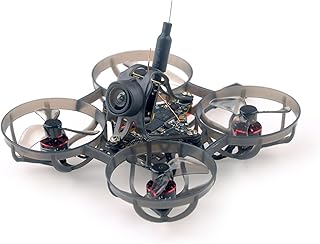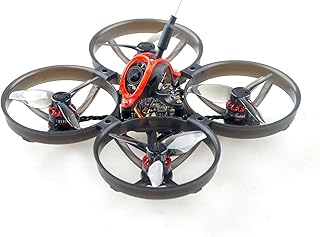Speedy Bee Drone: Safety Features and Regulations
Speedy Bee is a popular brand for micro drone racing and freestyle flying. They offer various models, and while they're known for their agility and performance, safety should always be a top priority when using any drone. Let's break down the safety features of Speedy Bee drones and discuss the regulations that apply to their use.
Safety Features of Speedy Bee Drones:
* Lightweight & Durable: Speedy Bee drones are typically built with lightweight and durable materials, reducing potential for injury during crashes. However, it's important to remember that they're not indestructible.
* FPV (First-Person View) System: This allows the pilot to see the drone's perspective through a screen, aiding in avoiding obstacles and navigating safely.
* Beginner-Friendly Software & Settings: Many Speedy Bee drones offer user-friendly interfaces and adjustable settings for power and responsiveness, allowing beginners to gradually learn and control their drones.
However, it's essential to remember that:
* Speedy Bee drones are designed for experienced pilots: While some models are marketed as beginner-friendly, they still demand a certain level of piloting skill due to their speed and maneuverability.
* No built-in safety features for beginners: Unlike larger consumer drones, Speedy Bee drones lack features like geofencing, automatic altitude hold, or obstacle avoidance.
* Liability and responsibility remain with the pilot: Even with FPV, it's the pilot's responsibility to ensure safe operation and avoid causing any damage or harm.
Regulations & Legal Considerations:
* FAA regulations: The Federal Aviation Administration (FAA) regulates all drone operations in the US.
* Registration: Drones over 0.55lbs need to be registered with the FAA.
* Flying restrictions: There are strict regulations around flying drones near airports, over people, and in prohibited airspace.
* Pilot certification: In some cases, recreational drone pilots need a remote pilot certificate (Part 107).
* Local regulations: Many cities and states have their own additional regulations regarding drone operation. Check your local laws before flying.
* Drone insurance: It's recommended to have insurance to cover any potential damage or injuries caused by your drone.
Safety Tips for Flying Speedy Bee Drones:
* Always practice in safe environments: Start in open, unpopulated areas with ample space for crashes.
* Begin with basic maneuvers and gradually increase difficulty: Don't try advanced techniques until you're comfortable with the basics.
* Always be aware of your surroundings: Pay attention to airspace, people, and obstacles.
* Respect privacy and avoid flying over private property without permission.
* Fly responsibly and follow all regulations.
Conclusion:
Speedy Bee drones are capable machines, but responsible piloting is crucial for ensuring safe and enjoyable flying experiences. Familiarize yourself with the FAA regulations and local laws, take necessary precautions, and always prioritize safety above all else.


